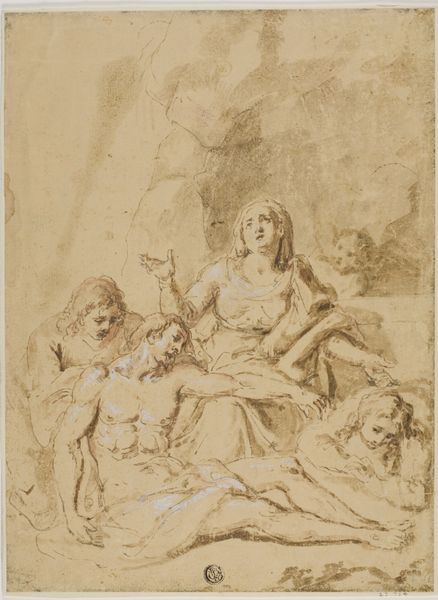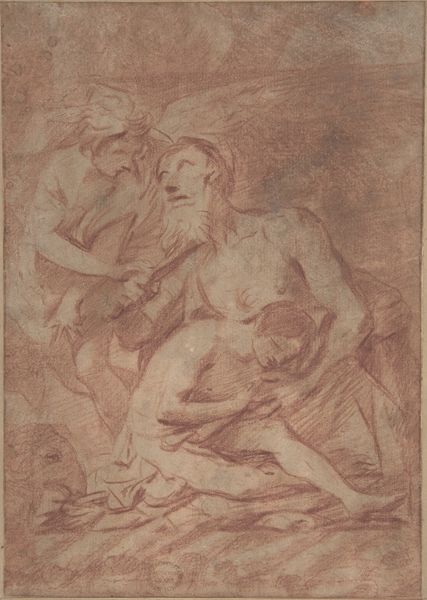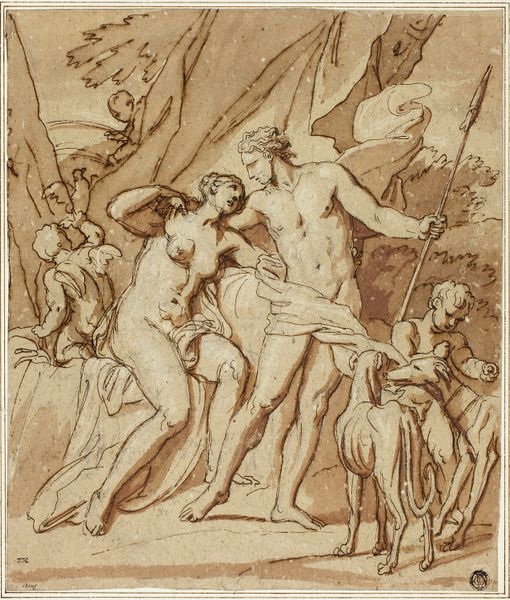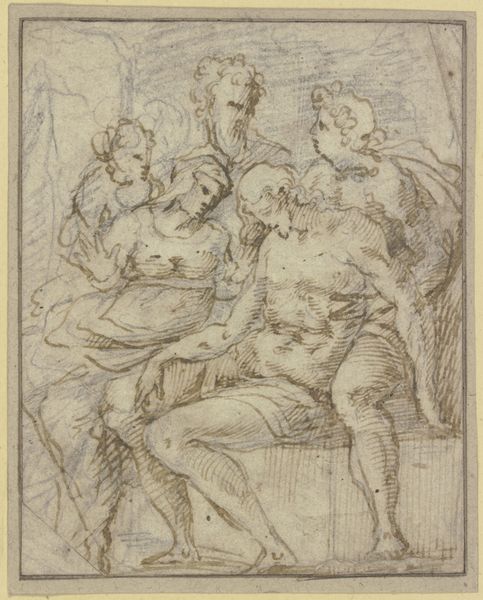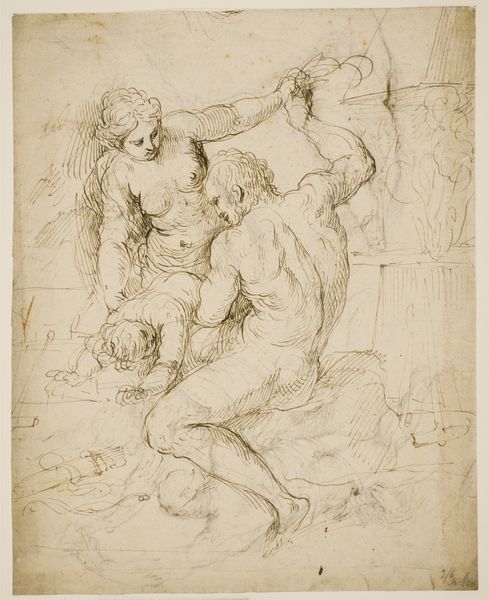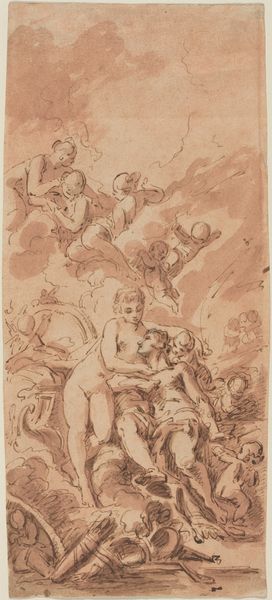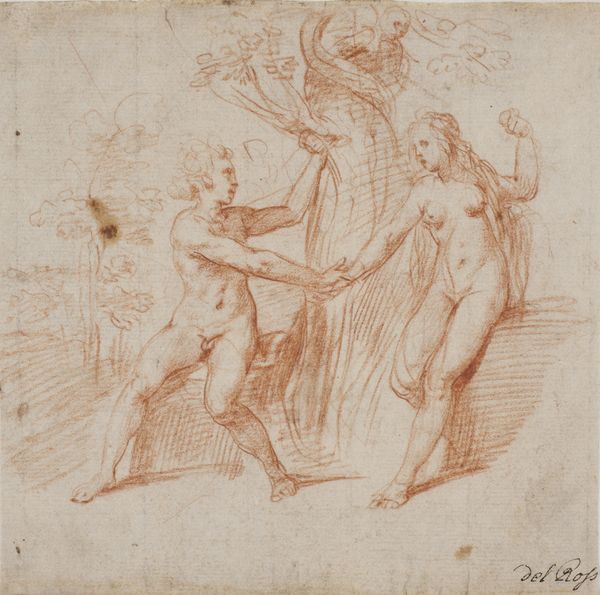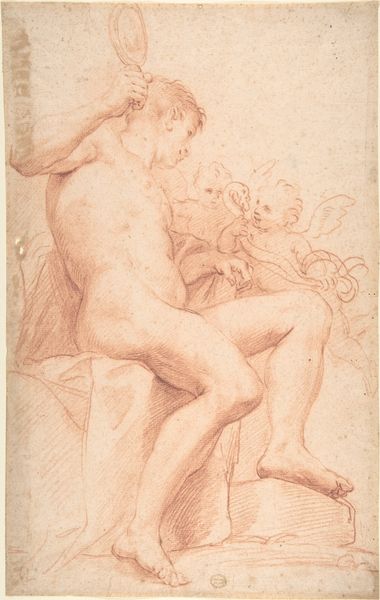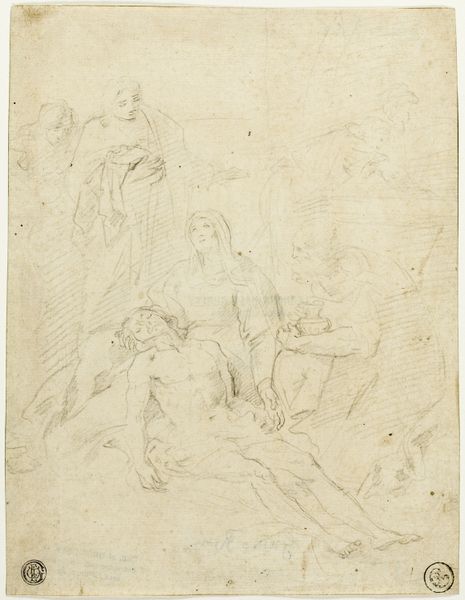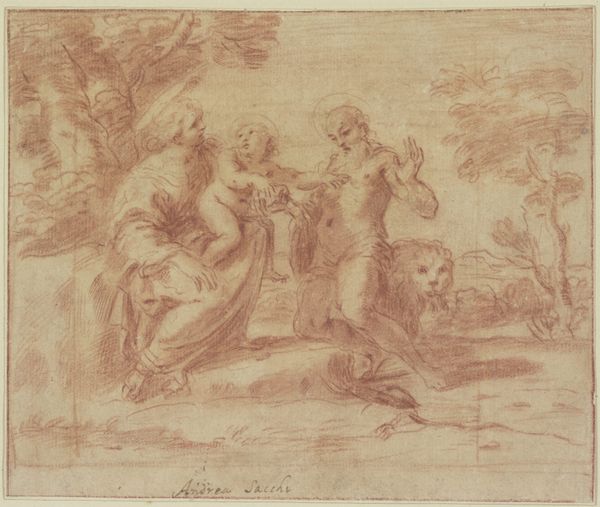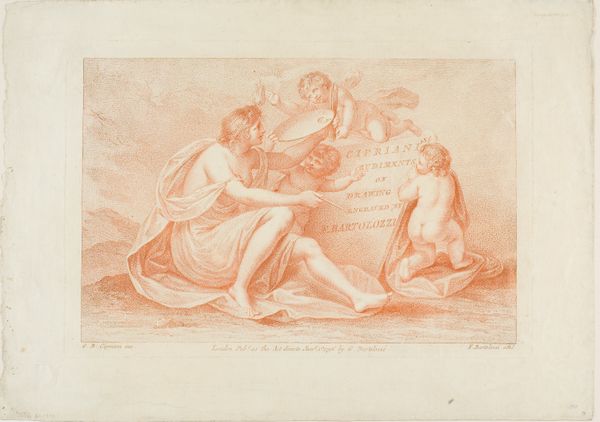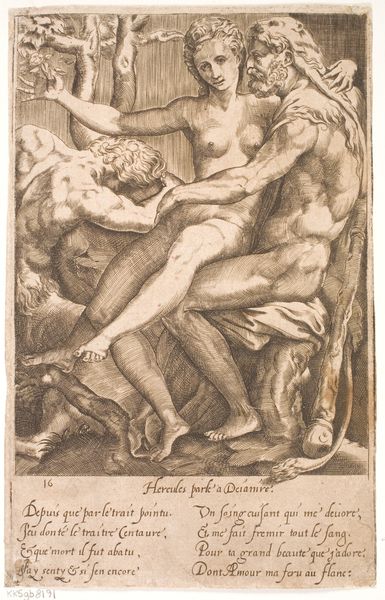
drawing, print, paper, chalk, charcoal
#
drawing
# print
#
charcoal drawing
#
figuration
#
paper
#
charcoal art
#
chalk
#
water
#
charcoal
#
history-painting
#
academic-art
#
italian-renaissance
Dimensions: 286 × 267 mm
Copyright: Public Domain
Curator: Before us, we have a work by Annibale Carracci titled "Hercules and Iole." It's an undated piece, rendered in chalk and charcoal on paper. Editor: Immediately, the reddish-brown hues evoke a feeling of warmth, almost domesticity, despite the figures' monumentality. It feels like a snapshot into an intimate scene. Curator: Carracci was quite interested in how drawings and prints could disseminate ideas about art-making. Notice how the figure of Hercules is presented. His tools of labor and triumph now seem… displaced. We see his club almost casually placed down. There's an exchange happening between production and something more intimate. Editor: The composition itself seems deliberate in its contrast between the active hero and the somewhat passive Iole. Hercules' club looms large beside her—almost like a forgotten symbol. It makes me think about how narratives get reframed, how potent icons shift in significance as cultures evolve. It reminds us that stories, like materials, get reworked. Curator: The red chalk itself would have been readily available. Carracci is drawing on a long line of Renaissance artists but he's doing so with these accessible materials, sort of democratizing the depiction of a mythological subject. Editor: And look at the subtle details of Iole’s ornamentation, a simple chain with pendant which might represent Aphrodite or perhaps eros—further suggesting themes of pleasure, romance and intimacy here. Curator: Perhaps. Consider also that Hercules' posture, almost lounging, undermines traditional depictions of heroic strength, potentially reflecting a societal critique through a common drawing technique and common materials. Editor: Yes, the work certainly complicates simplistic narratives around heroism, and seeing those tensions visualized here really gives me a fresh way of thinking about how classic myths speak across different eras and cultural contexts. Curator: I find myself questioning the means through which meaning itself is made when it comes to our understanding of value. Editor: And I find that I see in it reflections on the changing values of its era, through enduring symbolic images.
Comments
No comments
Be the first to comment and join the conversation on the ultimate creative platform.
